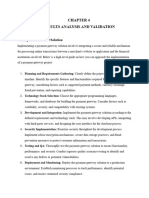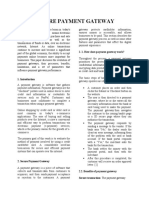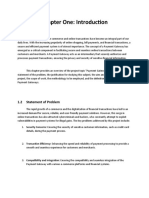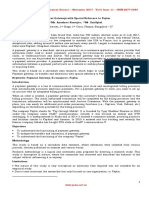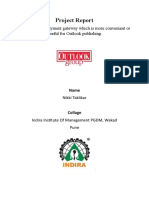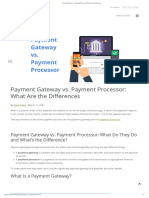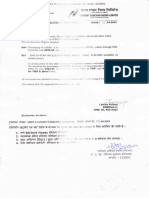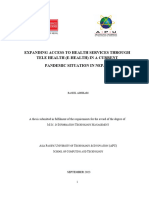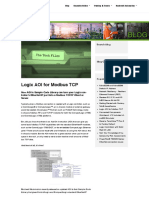100% found this document useful (1 vote)
121 views13 pagesReport On Building A Custom Payment Gateway System 2023
A payment gateway system is a technology that enables merchants to securely process electronic payments from their customers. It acts as a bridge between the merchant’s website and the acquiring bank or financial institution that holds the merchant’s payment processing account. The payment gateway verifies the customer's credit card information, ensures the transaction is approved, and securely transfers the payment to the merchant's account...
Uploaded by
Joe RexaCopyright
© © All Rights Reserved
We take content rights seriously. If you suspect this is your content, claim it here.
Available Formats
Download as PDF, TXT or read online on Scribd
100% found this document useful (1 vote)
121 views13 pagesReport On Building A Custom Payment Gateway System 2023
A payment gateway system is a technology that enables merchants to securely process electronic payments from their customers. It acts as a bridge between the merchant’s website and the acquiring bank or financial institution that holds the merchant’s payment processing account. The payment gateway verifies the customer's credit card information, ensures the transaction is approved, and securely transfers the payment to the merchant's account...
Uploaded by
Joe RexaCopyright
© © All Rights Reserved
We take content rights seriously. If you suspect this is your content, claim it here.
Available Formats
Download as PDF, TXT or read online on Scribd
/ 13

